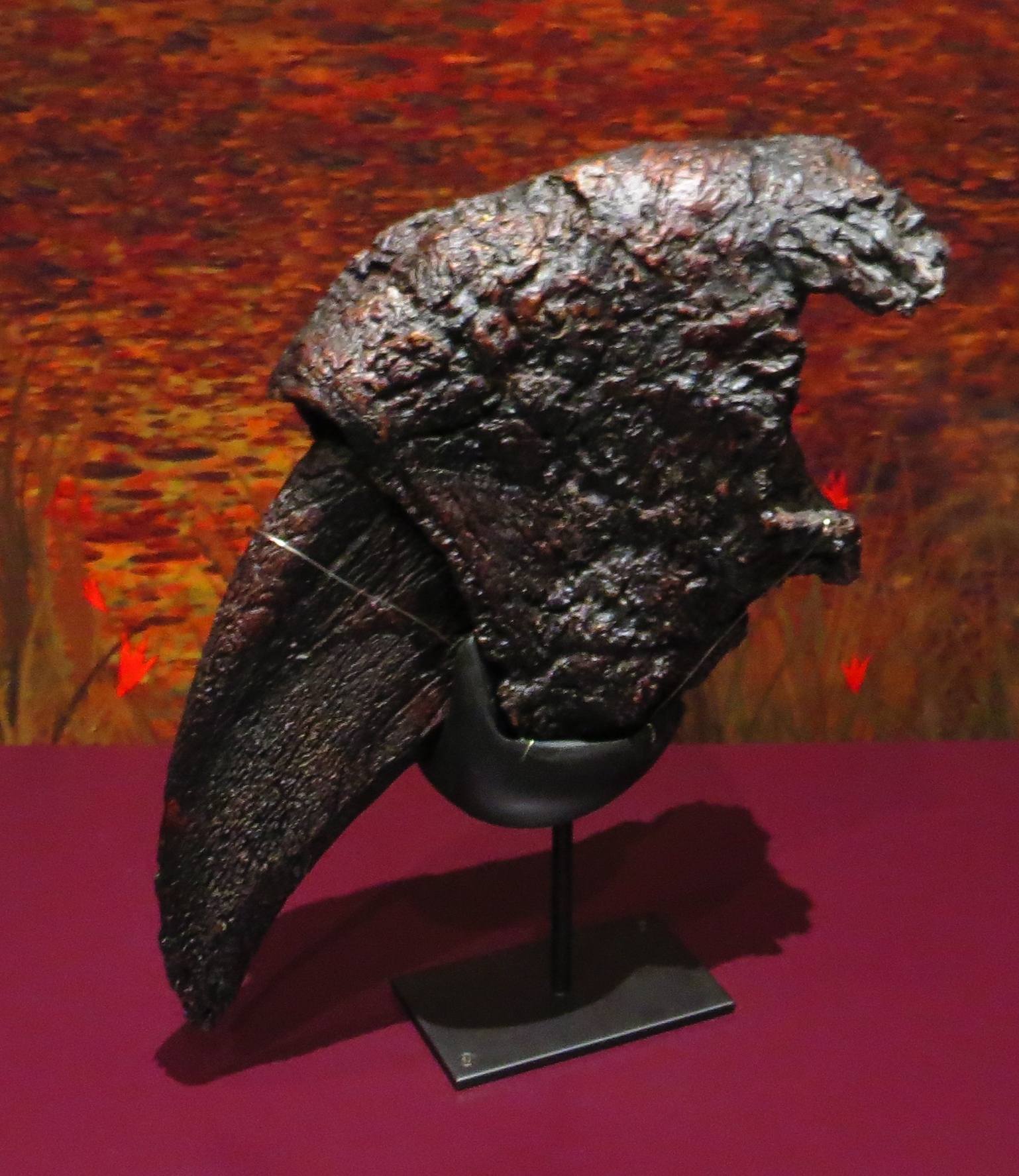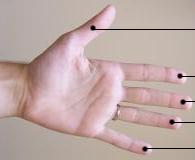|
Alectrosaurus
''Alectrosaurus'' (; meaning "alone lizard") is a genus of tyrannosauroid theropod dinosaur that lived in Asia during the Late Cretaceous period, about some 96 million years ago in what is now the Iren Dabasu Formation. It was a medium-sized, moderately-built, ground-dwelling, bipedal carnivore, estimated at with a body shape similar to its much larger advanced relative, ''Tyrannosaurus''. ''Alectrosaurus'' was a very fast running tyrannosauroid as indicated by the elongated hindlimbs that likely filled the niche of a pursuit predator, a trait that seems to be lost by the advanced and robust tyrannosaurids, in adulthood. Discovery and naming In 1923, the Third Asiatic Expedition of the American Museum of Natural History, led by chief paleontologist Walter W. Granger, was hunting for dinosaur fossils in Mongolia. On April 25 in the gobi desert, assistant paleontologist George Olsen excavated and recovered the holotype AMNH 6554, a nearly complete right hindlimb. This included a ... [...More Info...] [...Related Items...] OR: [Wikipedia] [Google] [Baidu] |
Tyrannosauroidea
Tyrannosauroidea (meaning 'tyrant lizard forms') is a superfamily (or clade) of coelurosaurian theropod dinosaurs that includes the family Tyrannosauridae as well as more basal relatives. Tyrannosauroids lived on the Laurasian supercontinent beginning in the Jurassic Period. By the end of the Cretaceous Period, tyrannosauroids were the dominant large predators in the Northern Hemisphere, culminating in the gigantic ''Tyrannosaurus''. Fossils of tyrannosauroids have been recovered on what are now the continents of North America, Europe and Asia, with fragmentary remains possibly attributable to tyrannosaurs also known from South America and Australia. Tyrannosauroids were bipedal carnivores, as were most theropods, and were characterized by numerous synapomorphy, skeletal features, especially of the skull and pelvis. Early in their existence, tyrannosauroids were small predators with long, three-fingered forelimbs. Late Cretaceous genera became much larger, including some of the ... [...More Info...] [...Related Items...] OR: [Wikipedia] [Google] [Baidu] |
Iren Dabasu Formation
The Iren Dabasu Formation (also known as Erlian Formation) is a Late Cretaceous geologic formation in the Iren Nor region of Inner Mongolia. Dinosaur remains diagnostic to the genus level are among the fossils that have been recovered from the formation. The formation was first described and defined by Henry Fairfield Osborn in 1922 and it is located in the Iren Nor region of China. Geology It comprises continental clastic sediments consisting of light grey fine sandstones, coarse sandstones and glutenites as well as mottled claystones and siltstones. The fine-grained floodplain sediments and the coarse-grained sediments of the point bar formed a series of repeated frequently binary sedimentary rhythms. The “binary structure” of the sedimentary rhythms strongly indicates meandering stream deposits rather than braided river deposits as previously thought. As indicated by the fluvial and lacustrine sedimentation, the Iren Dabasu Formation was a large floodplain terrain with br ... [...More Info...] [...Related Items...] OR: [Wikipedia] [Google] [Baidu] |
Bayan Shireh Formation
The Bayan Shireh Formation (also known as Baynshiree/Baynshire, Baynshirenskaya Svita or Baysheen Shireh) is a geological formation in Mongolia, that dates to the Cretaceous period. It was first described and established by Vasiliev et al. 1959. Description The Bayan Shireh Formation is primarily composed by varicoloured claystones and sandstones with calcareous concretions and characterized by grey mudstones and yellowish-brown medium grained sandstones. Up to thick, the most complete sections are found in the eastern Gobi Desert, consisting of fine-grained, often cross-stratified gray sandstone interbedded with claystone and concretionary, intraformational conglomerates with relatively thick units of red to brown mudstone in the upper part. The Baynshire and Burkhant localities are mainly composed by mudstone, siltstone, sandstone, and conglomerates, with most of their sedimentation being fluvial. The environments that were present on the Bayan Shireh Formation consisted ma ... [...More Info...] [...Related Items...] OR: [Wikipedia] [Google] [Baidu] |
1933 In Paleontology
References * Makovicky, P. J., 2001, A Montanoceratops cerorhynchus (Dinosauria: Ceratopsia) braincase from the Horseshoe Canyon Formation of Alberta: In: Mesozoic Vertebrate Life, edited by Tanke, D. H., and Carpenter, K., Indiana University Press, pp. 243–262. * Trexler, D., 2001, Two Medicine Formation, Montana: geology and fauna: In: Mesozoic Vertebrate Life, edited by Tanke, D. H., and Carpenter, K., Indiana University Press, pp. 298–309. 1930s in paleontology Paleontology 3 ... [...More Info...] [...Related Items...] OR: [Wikipedia] [Google] [Baidu] |
Albertosaurus
''Albertosaurus'' (; meaning "Alberta lizard") is a genus of tyrannosaurid theropod dinosaurs that lived in western North America during the Late Cretaceous Period, about 71 million years ago. The type species, ''A. sarcophagus'', was apparently restricted in range to the modern-day Canadian province of Alberta, after which the genus is named, although an indeterminate species ("cf. ''Albertosaurus'' sp.") has been discovered in the Corral de Enmedio and Packard Formations in Mexico. Scientists disagree on the content of the genus, with some recognizing ''Gorgosaurus libratus'' as a second species. As a tyrannosaurid, ''Albertosaurus'' was a bipedal predator with tiny, two-fingered hands and a massive head that had dozens of large, sharp teeth. It may have been an apex predator in its local ecosystem. While ''Albertosaurus'' was large for a theropod, it was much smaller than its larger and more famous relative ''Tyrannosaurus rex'', growing up to in length and weighing . ... [...More Info...] [...Related Items...] OR: [Wikipedia] [Google] [Baidu] |
Late Cretaceous
The Late Cretaceous (100.5–66 Ma) is the younger of two epochs into which the Cretaceous Period is divided in the geologic time scale. Rock strata from this epoch form the Upper Cretaceous Series. The Cretaceous is named after ''creta'', the Latin word for the white limestone known as chalk. The chalk of northern France and the white cliffs of south-eastern England date from the Cretaceous Period. Climate During the Late Cretaceous, the climate was warmer than present, although throughout the period a cooling trend is evident. The tropics became restricted to equatorial regions and northern latitudes experienced markedly more seasonal climatic conditions. Geography Due to plate tectonics, the Americas were gradually moving westward, causing the Atlantic Ocean to expand. The Western Interior Seaway divided North America into eastern and western halves; Appalachia and Laramidia. India maintained a northward course towards Asia. In the Southern Hemisphere, Australia and Ant ... [...More Info...] [...Related Items...] OR: [Wikipedia] [Google] [Baidu] |
Inner Mongolia
Inner Mongolia, officially the Inner Mongolia Autonomous Region, is an autonomous region of the People's Republic of China. Its border includes most of the length of China's border with the country of Mongolia. Inner Mongolia also accounts for a small section of China's border with Russia (Zabaykalsky Krai). Its capital is Hohhot; other major cities include Baotou, Chifeng, Tongliao, and Ordos. The autonomous region was established in 1947, incorporating the areas of the former Republic of China provinces of Suiyuan, Chahar, Rehe, Liaobei, and Xing'an, along with the northern parts of Gansu and Ningxia. Its area makes it the third largest Chinese administrative subdivision, constituting approximately and 12% of China's total land area. Due to its long span from east to west, Inner Mongolia is geographically divided into eastern and western divisions. The eastern division is often included in Northeastern China (Dongbei) with major cities including Tongliao, Chifeng, Hai ... [...More Info...] [...Related Items...] OR: [Wikipedia] [Google] [Baidu] |
Unguals
An ungual (from Latin ''unguis'', i.e. ''nail'') is a highly modified distal toe bone which ends in a hoof, claw, or nail. Elephants and ungulates have ungual phalanges, as did the sauropods and horned dinosaurs. A claw is a highly modified ungual phalanx. As an adjective, ungual means ''related to nail Nail or Nails may refer to: In biology * Nail (anatomy), toughened protective protein-keratin (known as alpha-keratin, also found in hair) at the end of an animal digit, such as fingernail * Nail (beak), a plate of hard horny tissue at the tip ...'', as in ''periungual'' (around the nail). References External links Mammal anatomy {{animal-anatomy-stub ... [...More Info...] [...Related Items...] OR: [Wikipedia] [Google] [Baidu] |
Humerus
The humerus (; ) is a long bone in the arm that runs from the shoulder to the elbow. It connects the scapula and the two bones of the lower arm, the radius and ulna, and consists of three sections. The humeral upper extremity consists of a rounded head, a narrow neck, and two short processes (tubercles, sometimes called tuberosities). The body is cylindrical in its upper portion, and more prismatic below. The lower extremity consists of 2 epicondyles, 2 processes (trochlea & capitulum), and 3 fossae (radial fossa, coronoid fossa, and olecranon fossa). As well as its true anatomical neck, the constriction below the greater and lesser tubercles of the humerus is referred to as its surgical neck due to its tendency to fracture, thus often becoming the focus of surgeons. Etymology The word "humerus" is derived from la, humerus, umerus meaning upper arm, shoulder, and is linguistically related to Gothic ''ams'' shoulder and Greek ''ōmos''. Structure Upper extremity The upper or pr ... [...More Info...] [...Related Items...] OR: [Wikipedia] [Google] [Baidu] |
Digit (anatomy)
A digit is one of several most distal parts of a limb, such as fingers or toes, present in many vertebrates. Names Some languages have different names for hand and foot digits (English: respectively "finger" and "toe", German: "Finger" and "Zeh", French: "doigt" and "orteil"). In other languages, e.g. Arabic, Russian, Polish, Spanish, Portuguese, Italian, Czech, Tagalog, Turkish, Bulgarian, and Persian, there are no specific one-word names for fingers and toes; these are called "digit of the hand" or "digit of the foot" instead. In Japanese, yubi (指) can mean either, depending on context. Human digits Humans normally have five digits on each extremity. Each digit is formed by several bones called phalanges, surrounded by soft tissue. Human fingers normally have a nail at the distal phalanx. The phenomenon of polydactyly occurs when extra digits are present; fewer digits than normal are also possible, for instance in ectrodactyly. Whether such a mutation can be surgica ... [...More Info...] [...Related Items...] OR: [Wikipedia] [Google] [Baidu] |
Greek Language
Greek ( el, label=Modern Greek, Ελληνικά, Elliniká, ; grc, Ἑλληνική, Hellēnikḗ) is an independent branch of the Indo-European family of languages, native to Greece, Cyprus, southern Italy (Calabria and Salento), southern Albania, and other regions of the Balkans, the Black Sea coast, Asia Minor, and the Eastern Mediterranean. It has the longest documented history of any Indo-European language, spanning at least 3,400 years of written records. Its writing system is the Greek alphabet, which has been used for approximately 2,800 years; previously, Greek was recorded in writing systems such as Linear B and the Cypriot syllabary. The alphabet arose from the Phoenician script and was in turn the basis of the Latin, Cyrillic, Armenian, Coptic, Gothic, and many other writing systems. The Greek language holds a very important place in the history of the Western world. Beginning with the epics of Homer, ancient Greek literature includes many works of lasting impo ... [...More Info...] [...Related Items...] OR: [Wikipedia] [Google] [Baidu] |
China
China, officially the People's Republic of China (PRC), is a country in East Asia. It is the world's most populous country, with a population exceeding 1.4 billion, slightly ahead of India. China spans the equivalent of five time zones and borders fourteen countries by land, the most of any country in the world, tied with Russia. Covering an area of approximately , it is the world's third largest country by total land area. The country consists of 22 provinces, five autonomous regions, four municipalities, and two Special Administrative Regions (Hong Kong and Macau). The national capital is Beijing, and the most populous city and financial center is Shanghai. Modern Chinese trace their origins to a cradle of civilization in the fertile basin of the Yellow River in the North China Plain. The semi-legendary Xia dynasty in the 21st century BCE and the well-attested Shang and Zhou dynasties developed a bureaucratic political system to serve hereditary monarchies, or dyna ... [...More Info...] [...Related Items...] OR: [Wikipedia] [Google] [Baidu] |




.png)


.jpeg/1200px-Siège_de_Beijing_(1213-1214).jpeg)



